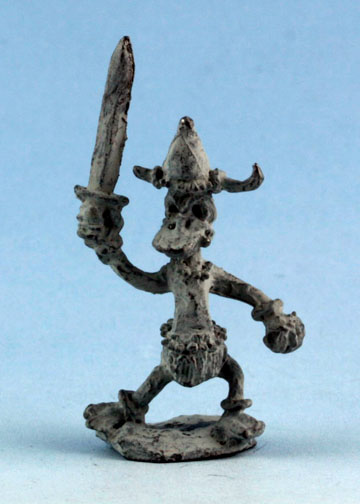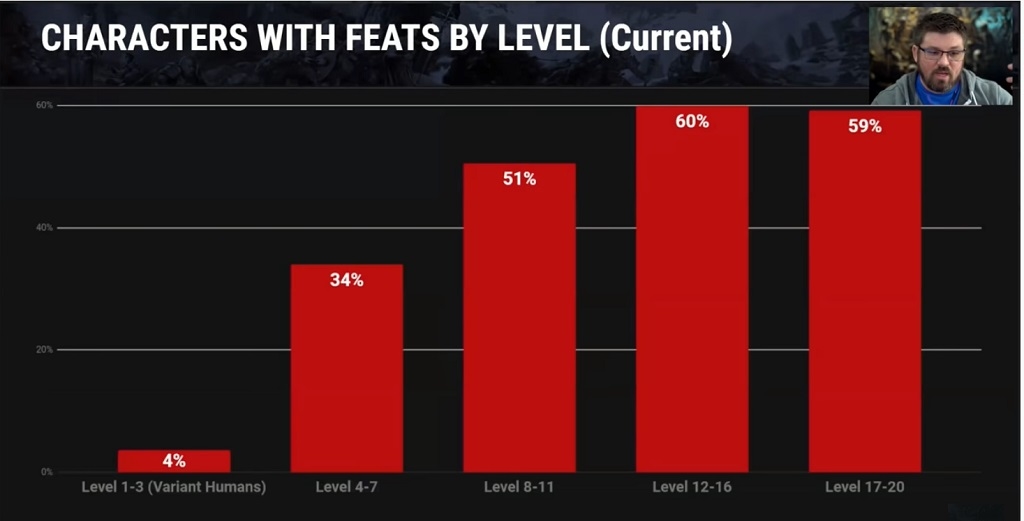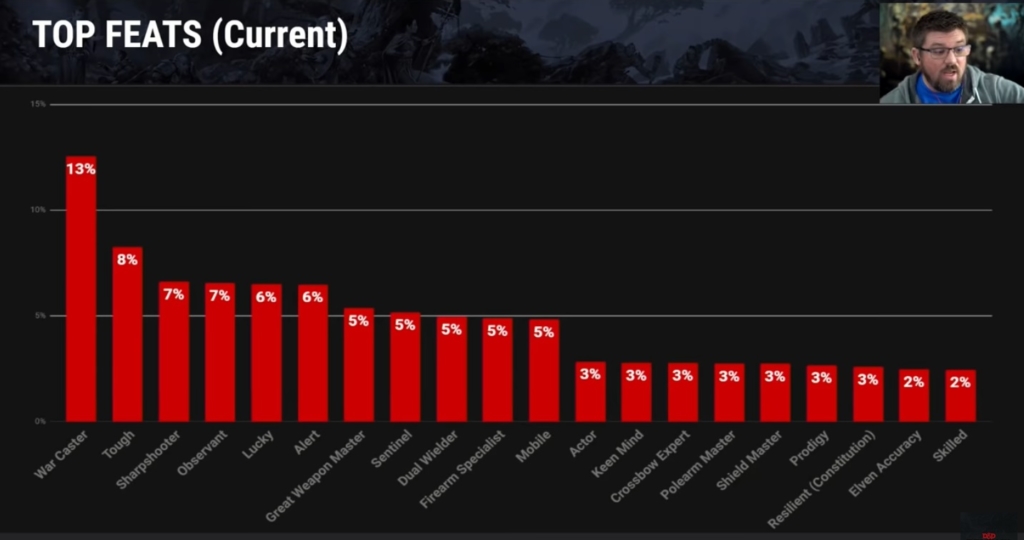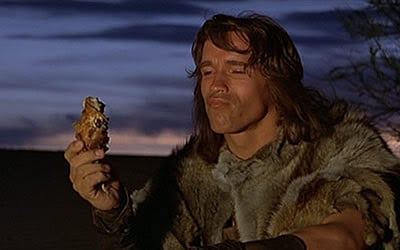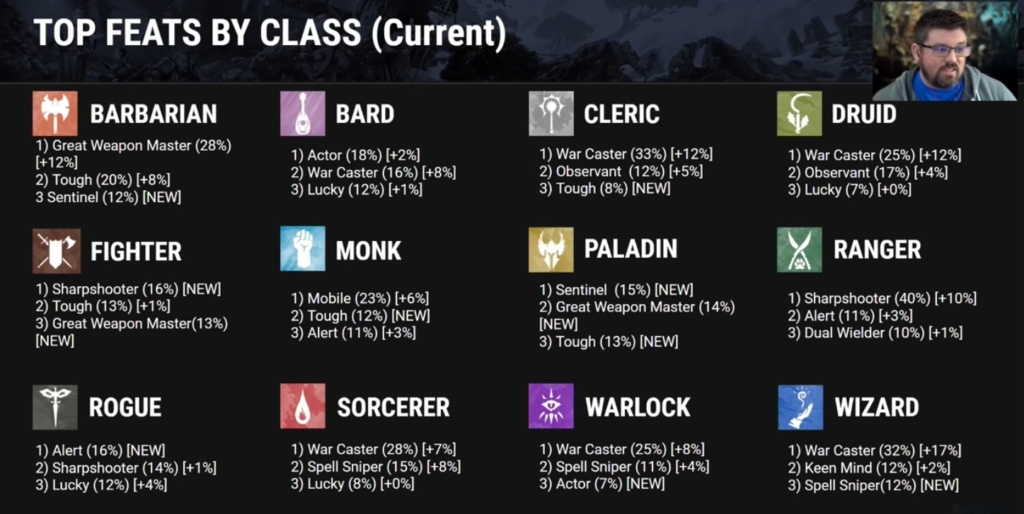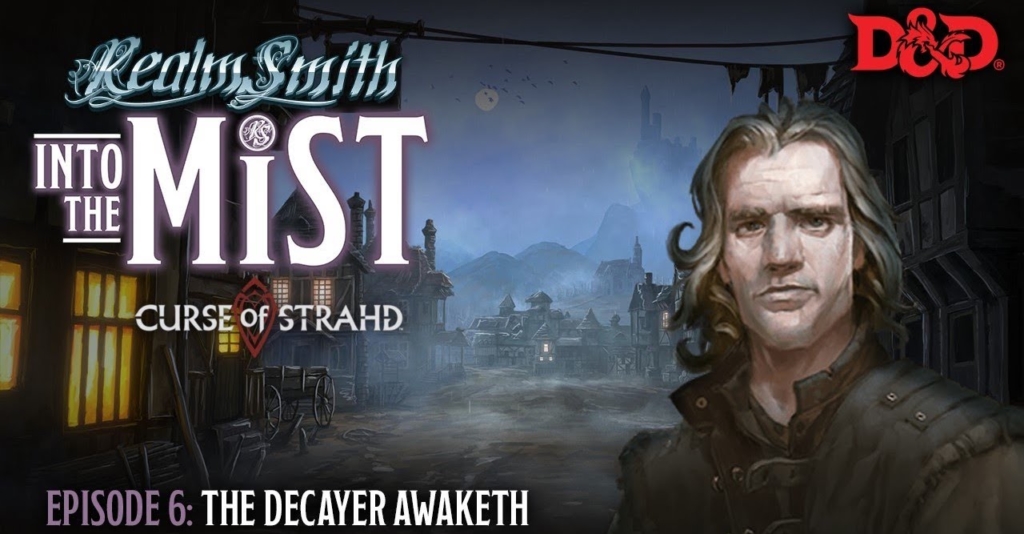D&D: The Top Feats Reveal Some Surprising Things About The Average Player
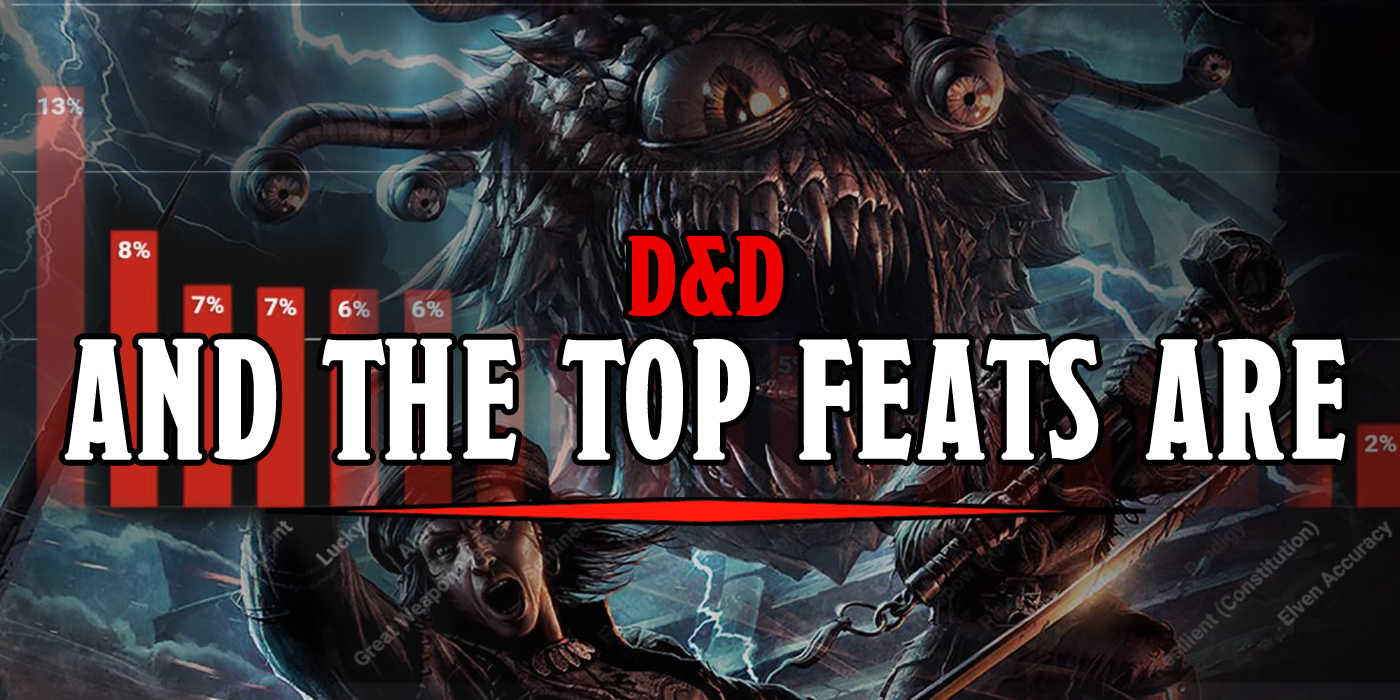

Feats are an optional rule in D&D–but according to the latest data, they’re an optional rule that a lot of people like to use.
Feats have been a popular part of D&D since the dawn of 3rd Edition, when they were not only introduced but mandatory. In their earliest days, they were advantages you could take that helped customize your character. So you might play a Fighter who wields a spiked chain and makes multiple attacks of opportunity, or a two-handed fighter wielding an oversized weapon and cleaving through every single foe within 5-foot stepping radius. You could, through no fault of your own, pick the wrong feats and make a bad character.
And this was before the days of bounded accuracy, when you needed to fight for every bonus so you had a lot to spend on your Combat Expertise or Power Attacks. Not that any of the Feats are themselves bad–it’s more like, they’re tools, and some were more specific than others. You can see the lessons of this kind of feat design in 5th Edition, where Feats are entirely optional. In fact, Jeremy Crawford, lead rules designer, once said that most people don’t play D&D using feats, according to some internal data from WotC. Now I can’t speak for that data, but according to the latest we’ve seen from D&D Beyond, that feels right. Only about half of the playerbase on D&D beyond seems to be creating characters that take advantage of Feats.
There’s a slight rise in feats over the last two years, but as you can see, Feats are by and large mostly taken when you hit that second boost at level 8. Once you get to that 18 (or 20) in whatever your primary stat is, it’s time to expand outward with feats. But again, 90% of all campaigns end at 10th level, and 60% of all campaigns don’t make it past 5th. So characters at 8th+ level are already rare enough. Those 12-16 and 17-20 entries account for such a small percentage of the playerbase, it does feel safe to say most people play without Feats. To a point. But what about the feats that people are taking? Here’s a look at the top feats overall.
War Caster takes the lead, with a surprising followup by Tough in second place. War Caster edging out the rest makes sense when you think about how many people who want to play some kind of Gish (fighter/mage) decide that they need War Caster to function. It lets you cast spells with somatic components while wielding a weapon or a shield in one or both hands, as well as giving you advantage on Concentration checks while letting you cast cantrips as an attack of opportunity.
Tough on the other hand has a little more of a reputation for being one of the plainer horses in the race. It gives you two extra hit points per level, which doesn’t seem like much, but that all adds up. Especially when you consider that the secret to the most successful characters is to have a lot of hit points and deal a lot of damage. You don’t even have to be especially hard to hit or have the biggest attack bonus.
It’s surprising, but delightful to see Actor coming up where it does, ahead of powerful combat feats like Crossbow Expert and Polearm Master. Let’s take a look at who’s taking what:
As you can see, the most likely character to have a feat are Rangers. Odds are good you’ll take Sharpshooter–but even so that’s still less than half. Well now that you’ve seen where these feats are going, let’s turn it over to you.
Do you use Feats in your games? What do you think about the way it breaks down? Let us know in the comments!

